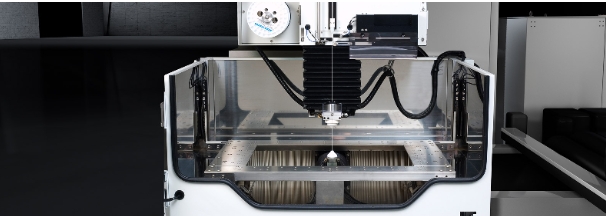Choosing the right CNC cutting method can be challenging. Learn about the differences between Laser, Plasma, and EDM cutting. Understand their benefits, limitations, and best-use scenarios to make an informed decision for your project.
Choosing the right CNC cutting method is crucial for achieving precision, efficiency, and cost-effectiveness in manufacturing. CNC cutting technologies have revolutionized the industry, offering various methods for different materials and applications. Laser, Plasma, and EDM (Electrical Discharge Machining) cutting are among the most popular. These technologies have strengths and weaknesses, making them suitable for specific tasks.
This article will discuss the differences between CNC Laser Cutting, CNC Plasma Cutting, and CNC EDM Cutting. By understanding these differences, you can make an informed decision on which method best suits your needs. We will explore each technology’s advantages and disadvantages and provide a comparison table for a quick overview.
Laser vs. Plasma vs. EDM CNC Cutting Differences Comparison.
CNC laser cutting is known for its precision and ability to create intricate designs with clean edges suitable for metals, plastics, wood, and glass. It offers high automation and consistency but can be expensive and struggles with very thick or reflective materials. In contrast, CNC Plasma Cutting excels in speed and efficiency, particularly for thick metals. It uses a plasma arc to melt material, making it fast and cost-effective, though less precise with rougher edges than laser cutting.
CNC EDM Cutting, divided into Wire EDM and Die-Sinking EDM, is highly precise and ideal for cutting hard metals and complex shapes. Wire EDM is excellent for intricate parts, while Die-Sinking EDM creates detailed cavities. Despite being slower and more costly, EDM is crucial for applications requiring fine detail and the ability to cut tough materials, offering unmatched precision and versatility.
Let’s talk about these techniques more comprehensively.
CNC Laser Cutting
CNC Laser Cutting is a highly precise cutting method that uses a focused laser beam to melt, burn, or vaporize material. This method is particularly known for its accuracy and ability to cut complex shapes with smooth edges. Laser cutting can be used on various materials including metals, plastics, wood, and even certain types of glass.
The process begins with a computer-aided design (CAD) file, translated into machine code to control the laser cutter. The laser beam is directed onto the material, cutting through it by either melting or vaporizing it. One of the major advantages of laser cutting is its precision. The laser can produce very fine cuts with high accuracy, making it ideal for intricate designs and detailed work.
Laser cutting also offers a high level of automation and repeatability. Once the machine is set up, it can run unattended, producing consistent results. This makes laser cutting highly efficient for mass production and applications that require high repeatability. Additionally, the non-contact nature of laser cutting reduces the risk of material deformation and ensures a clean cut.
However, laser cutting does have some limitations. It is unsuitable for very thick materials, and the initial setup cost for laser cutting machines can be quite high. The energy consumption can also be significant, depending on the power of the laser. Additionally, materials that reflect the laser beam, such as certain metals, can pose challenges and require specialized equipment. Despite these limitations, the benefits of laser cutting often outweigh the drawbacks, particularly for applications requiring high precision and fine detail.
CNC Plasma Cutting

CNC Plasma Cutting is another widely used cutting method, particularly for metals. Plasma cutting uses an electrically conductive gas to create a plasma arc that melts the cut material. This method is known for its speed and efficiency when cutting thick metal sheets.
The process involves a high-velocity jet of ionized gas (plasma) directed at the material. The plasma arc melts the metal, and the high-velocity gas blows away the molten material, creating a cut. Plasma cutting suits various metals, including steel, aluminum, and copper. It can cut through thick materials that would be challenging for other cutting methods.
One of the key advantages of plasma cutting is its speed. It can quickly cut through thick metal, making it ideal for industrial applications where time is critical. Plasma cutting is also relatively cost-effective compared to laser cutting, especially for thicker materials. The initial investment for a plasma cutting machine is generally lower than that for a laser cutter, making it an attractive option for many businesses.
However, plasma cutting is not as precise as laser cutting. The edges of the cut may be rougher, and it may not be suitable for intricate designs requiring fine detail. The heat-affected zone (HAZ) in plasma cutting is also more prominent than in laser cutting, which can lead to thermal distortion in some materials. Additionally, plasma cutting is primarily limited to electrically conductive materials, restricting its versatility compared to laser cutting.
Despite these limitations, plasma cutting remains popular for applications requiring fast, efficient, thick metal cutting. Its lower cost and high speed make it a practical solution for many industrial applications, particularly in the automotive, construction, and metal fabrication industries.
CNC EDM Cutting.

CNC EDM Cutting, or Electrical Discharge Machining, is a unique cutting method that uses electrical discharges (sparks) to erode material. EDM is particularly useful for cutting hard metals and creating intricate shapes that would be difficult or impossible with other cutting methods. There are two main types of EDM: Wire EDM and Die-Sinking EDM.
Wire EDM uses a thin wire as an electrode to cut through the material. The wire is constantly fed through the material, and electrical discharges between the wire and the material erode the material, creating a precise cut. Wire EDM is known for its accuracy and is often used to manufacture precision parts and molds. It can produce intricate shapes and fine details that are difficult to achieve with other cutting methods.
Die-sinking EDM, on the other hand, uses a shaped electrode submerged in a dielectric fluid along with the workpiece. The electrical discharges between the electrode and the workpiece erode the material, creating the desired shape. Die-sinking EDM is often used to create complex cavities and shapes in hard materials. This method is particularly useful for producing detailed molds and dies used in manufacturing processes.
EDM cutting offers high precision and is capable of cutting complex shapes with fine detail. It is particularly useful for hard metals that are difficult to cut with other methods. EDM does not exert any mechanical force on the material, reducing the deformation risk and ensuring a high-quality finish. However, EDM cutting can be slow compared to laser and plasma cutting, making it less suitable for applications where speed is critical.
The cost of EDM cutting is also generally higher than plasma cutting. It requires specialized electrodes and dielectric fluids, which can add to the operating costs. Additionally, EDM cutting machines require regular maintenance to ensure optimal performance. Despite these challenges, EDM cutting is an invaluable tool for industries that require high precision and the ability to cut hard materials, such as the aerospace, automotive, and tool-making industries.
Comparison Table.
| Feature | Laser Cutting | Plasma Cutting | EDM Cutting |
| Precision | High | Moderate | Very High |
| Speed | Moderate | High | Low |
| Material Thickness | Thin to moderate | Moderate to thick | Thin to thick |
| Suitable Materials | Metals, plastics, wood, glass | Metals (steel, aluminum, copper) | Hard metals (tool steel, carbide) |
| Cost | High initial cost, low operating cost. | Moderate initial cost, low operating cost. | High initial and operating costs. |
| Automation | High | High | Moderate |
| Edge Quality | Smooth, clean edges | Rougher edges | Smooth, clean edges. |
| Intricate Designs | Excellent for fine details | Not suitable for very fine details | Excellent for fine details |
| Heat Affected Zone (HAZ) | Minimal | Moderate | Minimal |
| Maintenance | Low | Moderate | High |
Conclusion
Choosing the right CNC cutting method depends on your needs and the materials you are working with. CNC Laser Cutting is ideal for precise, intricate designs and offers high automation and repeatability. However, it may not be suitable for very thick materials and can be expensive to set up. CNC Plasma Cutting is a fast and efficient method for cutting thick metals, but it may provide a different level of precision than laser cutting. CNC EDM Cutting excels in cutting hard metals and creating intricate shapes, but can be slow and costly.
Consider the material, thickness, required precision, and budget when choosing between Laser, Plasma, and EDM cutting. Each method has advantages and limitations, and the best choice will depend on the specific requirements of your project. By understanding the differences between these cutting methods, you can make an informed decision and achieve the best results for your manufacturing needs.
For instance, if you work with thin to moderate materials requiring high precision and intricate designs, CNC Laser Cutting would be the best choice. On the other hand, if you need to cut through thick metal quickly and cost-effectively, CNC Plasma Cutting would be more suitable. CNC EDM Cutting offers unparalleled precision despite its higher cost and slower speed for applications involving hard metals and complex shapes.
In conclusion, the right CNC cutting method can significantly impact the quality and efficiency of your manufacturing process. By carefully evaluating the advantages and limitations of Laser, Plasma, and EDM cutting, you can select the most appropriate method for your specific needs, ensuring optimal performance and cost-effectiveness in your operations.





